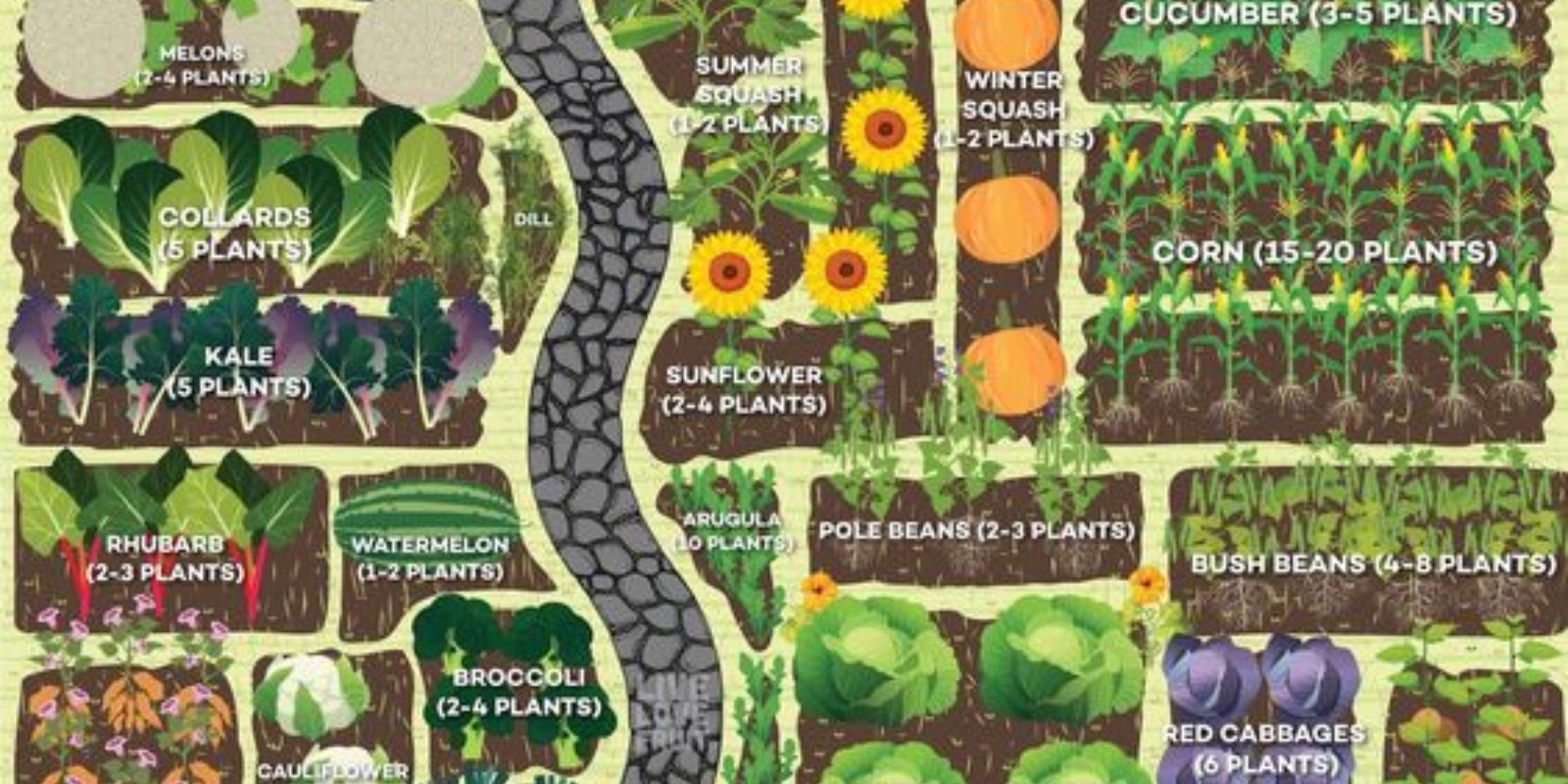Planning a garden to provide enough food for a year is an ambitious and rewarding endeavor. To achieve a successful and sustainable harvest, it’s essential to determine how much to plant per person. This article will guide you through the process of estimating your food needs, selecting appropriate crops, and planning your garden to ensure you have a year’s worth of nutritious and delicious produce.
Understanding Your Food Needs
Before you begin planting, it’s crucial to assess how much food an individual consumes annually. This involves calculating the quantities of different types of produce needed to meet daily and yearly nutritional requirements.
1. Assess Daily Consumption
Begin by estimating the average amount of each type of food consumed daily. This includes vegetables, fruits, grains, and protein sources. For example:
- Vegetables: A person might consume 2-3 servings of vegetables per day.
- Fruits: An average intake could be 1-2 servings of fruits daily.
- Grains: Typically, 1-2 servings of grains are consumed per meal.
- Protein: This can include beans, legumes, and other protein sources.
2. Calculate Annual Needs
Multiply the daily consumption amounts by 365 to determine the annual needs for each type of food. For instance:
- If a person eats 2 servings of vegetables per day, that equates to 730 servings annually.
Choosing Crops
With your annual food needs in mind, choose crops that will provide the necessary nutrients and fit your growing conditions. Consider these factors when selecting crops:
1. Climate and Soil
Choose crops that thrive in your local climate and soil conditions. Check local gardening resources or consult with local extension services for recommendations.
2. Crop Varieties
Select a mix of crops to ensure a varied diet. Include staple foods that are easy to store and preserve, as well as seasonal varieties for fresh produce throughout the year.
3. Growing Seasons
Account for both cool-season and warm-season crops to maximize your garden’s productivity. This ensures a continuous supply of fresh produce.
Determining Planting Quantities
Once you’ve selected your crops, determine how many plants are needed per person to meet your annual food goals. Each crop has different yield expectations, so it’s essential to use specific guidelines for each type.
1. Estimate Yield Per Plant
Research the average yield per plant for each crop. For example:
- Tomatoes: A single tomato plant might produce 10-15 pounds of tomatoes per year.
- Lettuce: A head of lettuce can be harvested multiple times throughout the growing season, providing several servings.
2. Calculate Plant Quantities
Based on the yield estimates and your annual consumption needs, calculate the number of plants required. For instance:
- Tomatoes: If you need 50 pounds of tomatoes annually and each plant yields 12 pounds, you’ll need approximately 5 plants.
- Lettuce: If you consume 100 heads of lettuce per year and each plant produces 6 heads, you’ll need about 17 plants.
Planning Crop Rotation
To maintain soil health and avoid pest issues, implement a crop rotation plan. This involves changing the types of crops grown in specific areas of your garden each year. Crop rotation helps prevent soil depletion and reduces the risk of disease and pests.
1. Rotate Crops by Family
Group plants into families and rotate them yearly. For example, avoid planting tomatoes in the same spot where other nightshades (like peppers or eggplants) were grown the previous year.
2. Plan for Soil Health
Incorporate cover crops and green manures into your rotation to improve soil fertility. These plants add organic matter to the soil and help fix nitrogen, enhancing overall soil health.
Tracking and Adjusting
Monitor your garden’s performance throughout the growing season to ensure you’re meeting your food production goals. Keep track of:
1. Harvest Yields
Record the actual yields from your garden to compare with your estimates. This helps you understand which crops are performing well and which may need adjustment.
2. Consumption Patterns
Observe your consumption patterns and adjust planting quantities as needed. If certain crops are underperforming or not meeting your needs, consider changing varieties or adjusting the number of plants.
3. Storage and Preservation
Plan for storing and preserving excess produce to ensure you have enough food throughout the year. Techniques like canning, freezing, and drying can help you extend the availability of your garden harvest.
Example Planting Plan
To illustrate, here’s a sample planting plan for one person’s annual food needs:
- Tomatoes: 5 plants (50 pounds of tomatoes)
- Lettuce: 17 plants (100 heads of lettuce)
- Carrots: 25 feet of row (100 pounds of carrots)
- Beans: 20 plants (40 pounds of beans)
- Potatoes: 20 pounds of seed potatoes (200 pounds of potatoes)
This plan provides a balance of fresh produce, storage crops, and a variety of nutrients.
Conclusion
Planning how much to plant per person for a year’s worth of food involves careful consideration of dietary needs, crop selection, planting quantities, and ongoing management. By following these steps and adapting your plan based on actual performance, you can create a productive and sustainable garden that meets your food needs throughout the year. Embrace the challenge and satisfaction of growing your own food, and enjoy the rewards of a well-planned and fruitful garden. 🌱🥕

